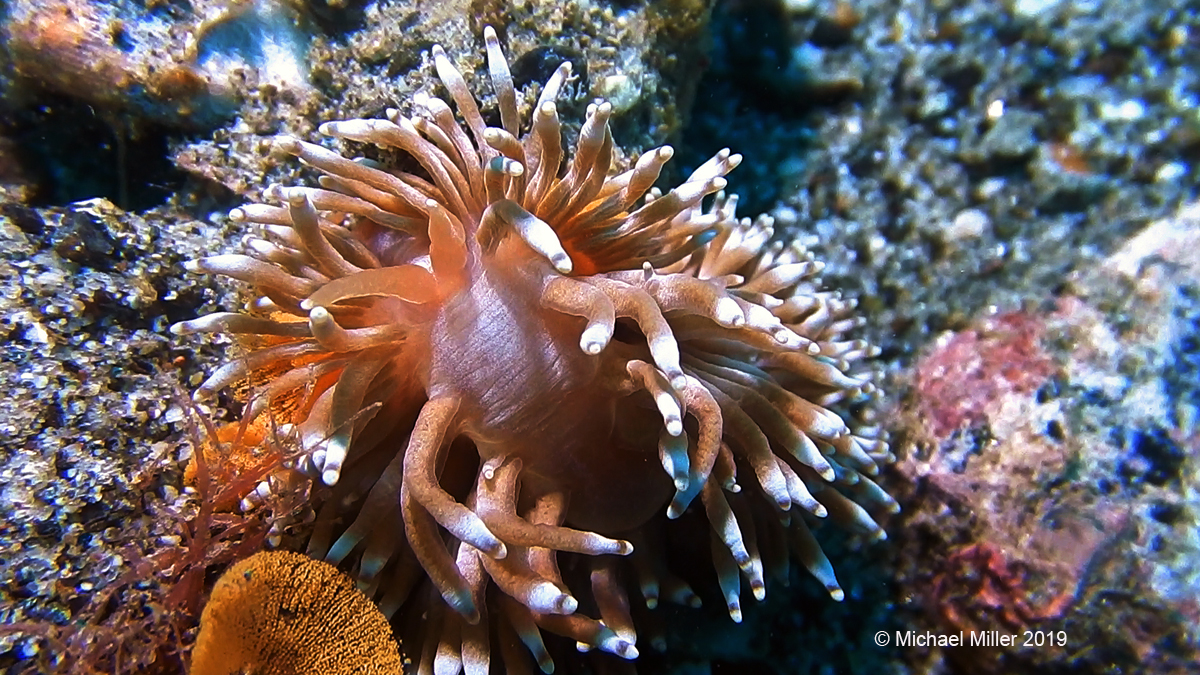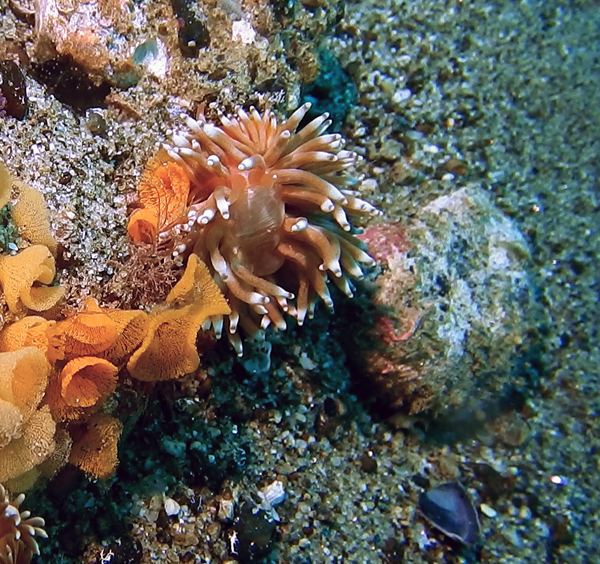 |
Image courtesy of Webmaster
Ambon, Indonesia
Freeze Frame from CoolPix AW 130 Video
The taxonomy of this group of aeolids (Family Fionidae) has bounced all over the place. Fionid genera currently include Abonica, Tergipes, Tergiposacca, Fiona, and Tenellia. Previously most of the species included in Tenellia, were considered to be Cuthona. Tenellia sp. 83 (here) was considered a Phestillia. Although we are calling Michael's critter here, Tenellia sp. 83, it is very similar to Tenellia sp. 79, in NSSI 2nd Ed (page 299).
It is one of several undescribed species of coral eating aeolids. All are quite cryptic on the prey. This species feeds on Pavona. Michael's photo here suggests they may also feed on Goniopora.
This species is brown with undulating opaque white patches on the notum. The cerata are cylindrical, with club shaped tips.
More work is needed to separate these guys.
Photo by Webmaster
 |
Dave and I are indebted to Sean and Susan Kearney for first bringing this guy to our attention back in 2012 when at the time, it was classified as a Phestillia. The subject can be quite cryptic when feeding on coral but certainly invites attention when in the egg laying process. Early on in our Ambon trip, Jim Black and myself were alerted to its presence by another diver. Well, serendipity set in! A few days later I came across the distinctive bright, undulating, orange egg mass and shortly identified our subject in the process of producing additional egg mass! |
Dave Behrens
Sammamish, WA 98074
Jul., 2019
Send Dave Behrens email at davidwbehrens@gmail.com

Attention all you Sluggers, and you know who you are! The NSSI 2nd edition is now available in ebook PDF and book form . The hard back version will become available Nov. 1st. Both will cost $65 (individually). You will need to jump through a few hoops to get the electronic version as pdf distribution is protected by Adobe ID!! Please read the following to enable reading your electronic purchase! This new 2nd Edition is updated and reorganized, including 185 new species. Among other features, the new edition includes additional photographs of species, an identification key, and an up-to-date classification reflecting the latest evolutionary relationships. The Indo-Pacific represents the largest expanse of tropical ocean in the world, stretching from the Indian Ocean coast of southern Africa and the Red Sea to the central Pacific of the Hawaiian Islands, Easter Island and the Marquesas. This region supports the most diverse marine fauna of any place in the world for most groups of marine organisms. The nudibranchs and sea slugs are no exception to this rule; there are about 3,000 described species of these organisms in the world and at least 40% of these have been found exclusively in the Indo-Pacific tropics. This book illustrates 2,138 Indo-Pacific nudibranchs and sea slugs, including many undescribed species.
|

|
